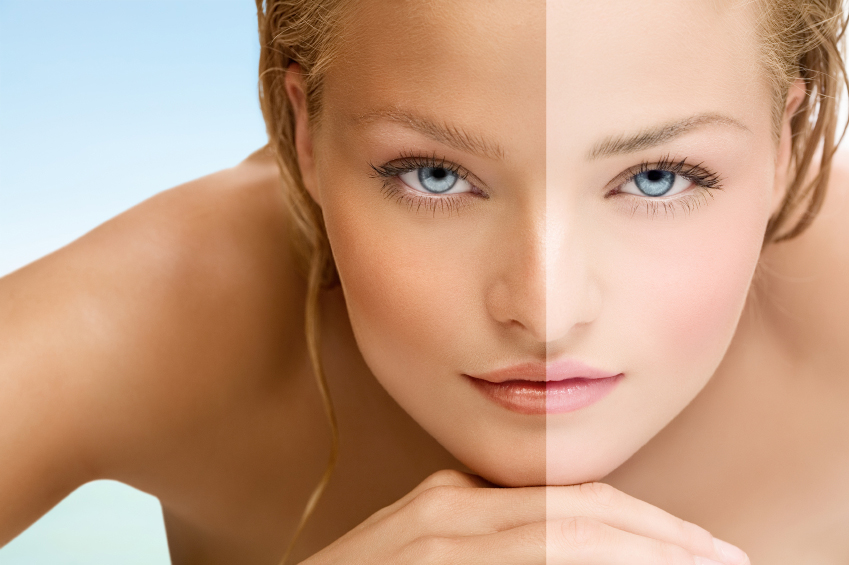We’ve all been told one time or another by our parents to put sunscreen on whether you get tan easily or you just burn. And we all know the sun in harmful but do you actually know what the sun is doing to your skin? Many people have researched this become it’s become a very big issue. People never used to think that the sun was too harmful unless you got a sunburn so they would use baby oil on their skin to get the best tan since the sun is attracted to it. This clearly caused many skin issues and lead people to try to fix the problem.

As we are all aware of sunburns are caused by the suns ultraviolet radiation (UVR). There are two different types of rays. UVA and UVB; UVA is what causes the wrinkles and sun spots and UVB is what causes sunspots and suntans. UVB rays show the science behind the sunburns and suntans.
These harmful rays come in contact with our skin and begin producing melanin, which is the pigment that darkens our skin and absorbs the harmfulness of the rays before DNA damage is done. These rays promote the secretion of MHS, Melanocyte Stimulating Hormone, which is what binds to a receptor on the surface of melanocytes and triggers melanogenesis. This releases cAMP which is a chemical. The more cAMP, the more melanin that is synthesized. Once the melanin is transferred from the melanocytes, it produces the tan appearance of the skin.
For people with fair or light skin, the MHS doesn’t bind to it’s receptor as well so less melanin is produced. Since there is less melanin, the UVB rays strike melanocytes which can cause nuclear damage and then an inflammatory response which we call sunburn. The damage done here is permanent although the discoloration and inflammation may go down. The less melanin, such as in people with fair skin, have a much higher risk in permanent damage such as skin cancer.
http://scribol.com/science/the-science-behind-tanning
http://health.howstuffworks.com/skin-care/beauty/sun-care/sunscreen.htm
http://www.skincancer.org/news/tanning/world-health-organization-scientists-warn-against-ultraviolet-tanning-beds-

This posts helped me because I used to get sun spots and now I know why. Tanning has so many negative affects on the skin but it’s so hard not to tan in the summer sun. I have freckles and when I tan they are so prominent and multiply, but when I am not exposes to sun they basically disappear.
This post relates to me. I am the type of person that can walk outside in the sun for five minutes and go back inside looking at my skin that was twice as dark. I also have never been sun burnt in my life and I never use sun screen. However, I do used to get sun spots, and now I know what it’s from! Sun spots were really annoying and hard to get rid of. Basically they were white patches on my skin. And because I was so dark it was so noticeable. Thanks for this post!
I always also wonder, how bad is a tanning bed for you? You always here that people who tan in beds have an extremely high chance of getting skin cancer, but is this true? Turns out, tanning beds have mostly UVA rays so the rays penetrate deeper into the skin causing even more of a harmful effect on cells. If you tan in beds its even worse than tanning in the sun.
http://health.howstuffworks.com/skin-care/beauty/sun-care/tanning-beds-dangerous.htm
I personally am able to tan really really easily; however, one of my brothers is not so I’ve always been around when he’s being reprimanded for not putting on sunscreen. Although my skin is tanner, it’s still important to wear sunscreen no matter what.